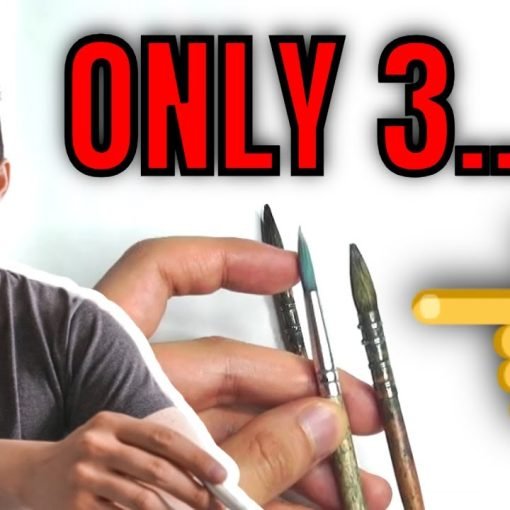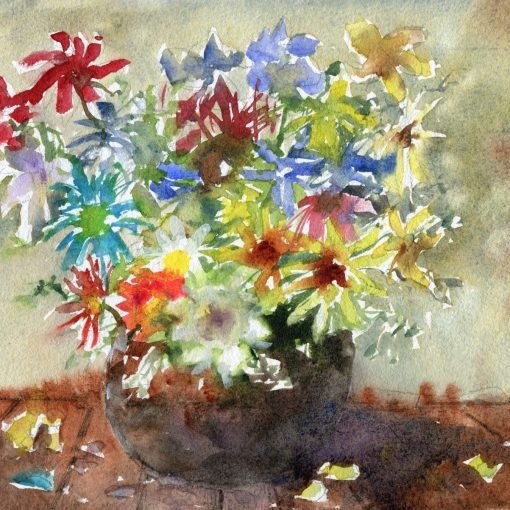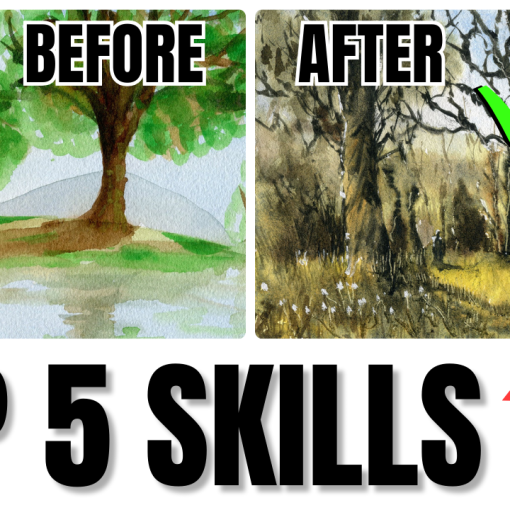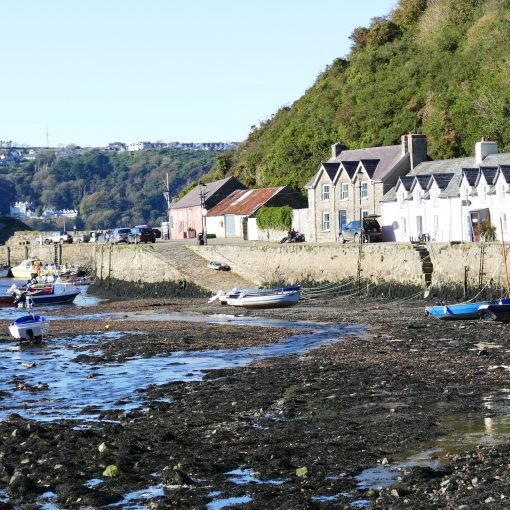These are some essential line and wash tips that I wanted to share with you. I wrote another short article here with some extra tips: Part 1.
Even with a loose style, it takes a lot of care and planning to make sure there are elements of realism in your scene (if you want that).
The drawing is equally if not more important than the painting, as it forms a guide for you later on. One of the ways I’ve been able to improve my landscapes is by drawing and painting from reference photos – either free ones or holiday photos.
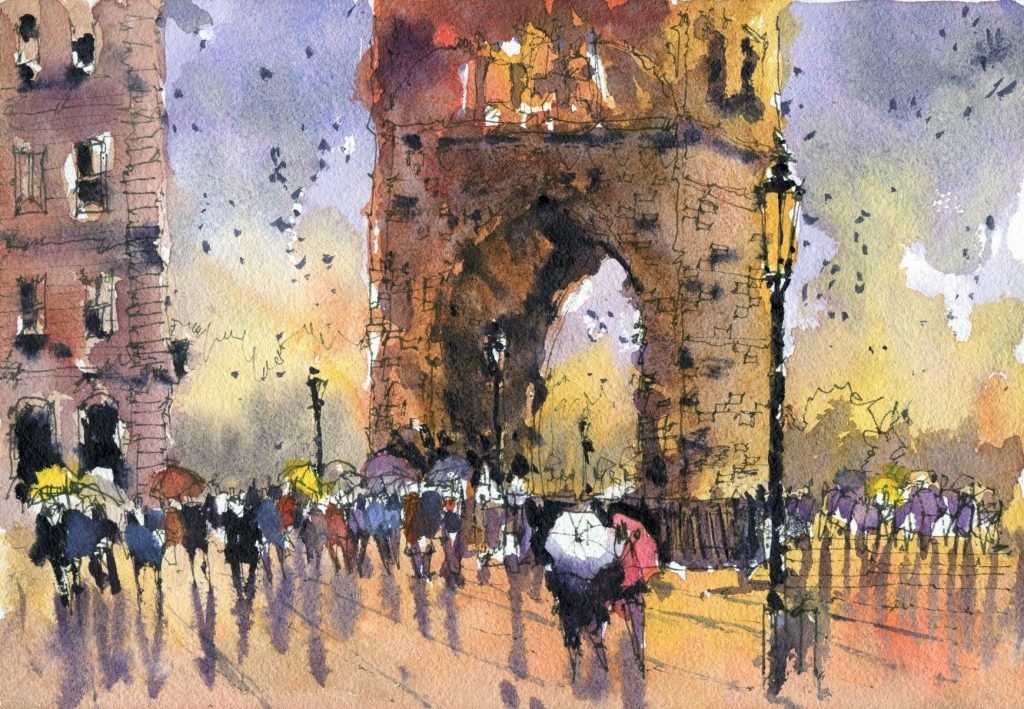
Plein-air painting and urban sketching are other great ways to practice. Simply buildings & objects into shapes like cubes, triangles. It takes time to train your mind to see buildings and people as simple shapes.
I also pay attention to perspective – whether there’s an eye-level view or high angle. Objects appear smaller and fainter in the distance.
Essential Line and Wash: Top Tips for Beginners
Use a pencil to mark in the horizon line and draw in very basic building shapes. Then go in with pen after. This allows you to be more confident & avoid larger errors. You can erase the pencil once the ink has dried.
Hold the pen near the end for a looser sketch, and closer to the tip for fine details. Set yourself a time limit for the sketch. I find without that I can spend FOREVER drawing. So be careful about overthinking it.
Paint the lighter values first. Generally, I add a base coat to the entire painting – e.g. light blue for the sky, Naples yellow for buildings, light gray for the ground. While this layer is wet, add in darker pigment to indicate clouds, waves, etc. Once dried, layer in dark pigments over the top. Try to layer cool over warm colors for a more vibrant/dramatic effect.

I often carry around an A4 sketchbook in my bag. When I get a moment, I find a nice spot to sit – it could be a bench or under a tree. I then try to sketch what I see. Try to find some time out of your day to take a walk and do the same. It’s relaxing and refreshing from sitting indoors with your reference!
Most reference photos look prettier due to editing (increased saturation, contrast) and framing, timing. So you need to change things around in the composition, zoom in to a particular area, perhaps add extra figures in different poses to tell a story.
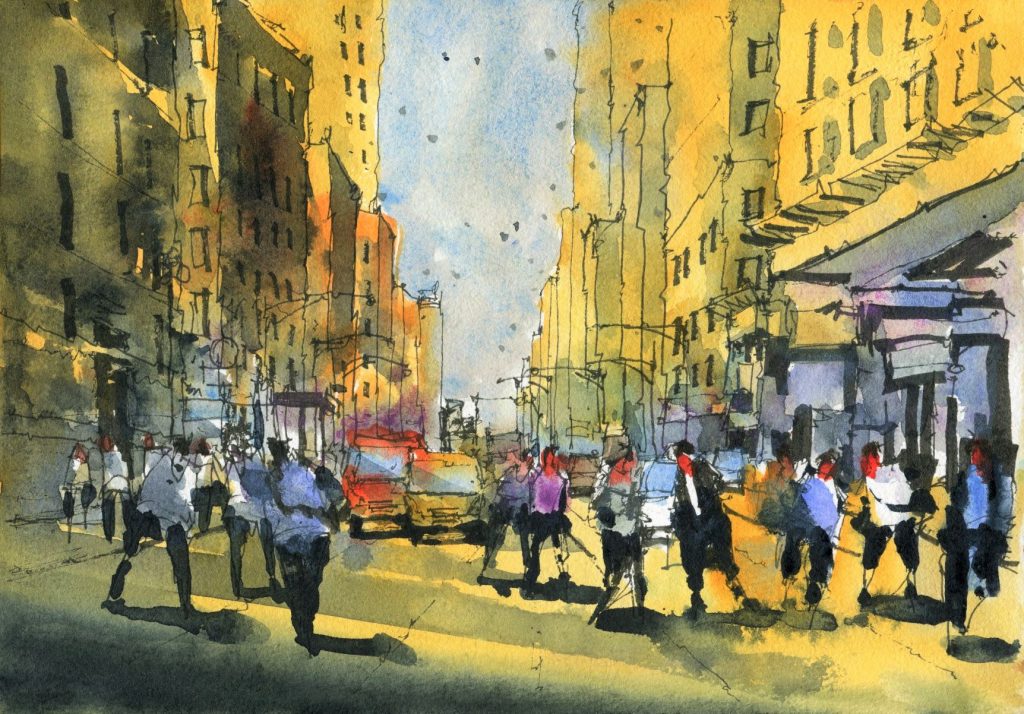
I always sketch in pen first before going in with watercolor. I find it forms a good structure and blueprint, which means less guesswork later on. I tend to spend more time on the pen sketch as it’s a form of relaxation for me. The pen sketch is also more important with line and wash, as the lines show through due to the transparency of watercolor.
When drawing, try to sketch the objects and people in the foreground/front first. This allows you to create an ‘overlapping effect with objects in the background. That way you’re not drawing over the top of other objects and figures.
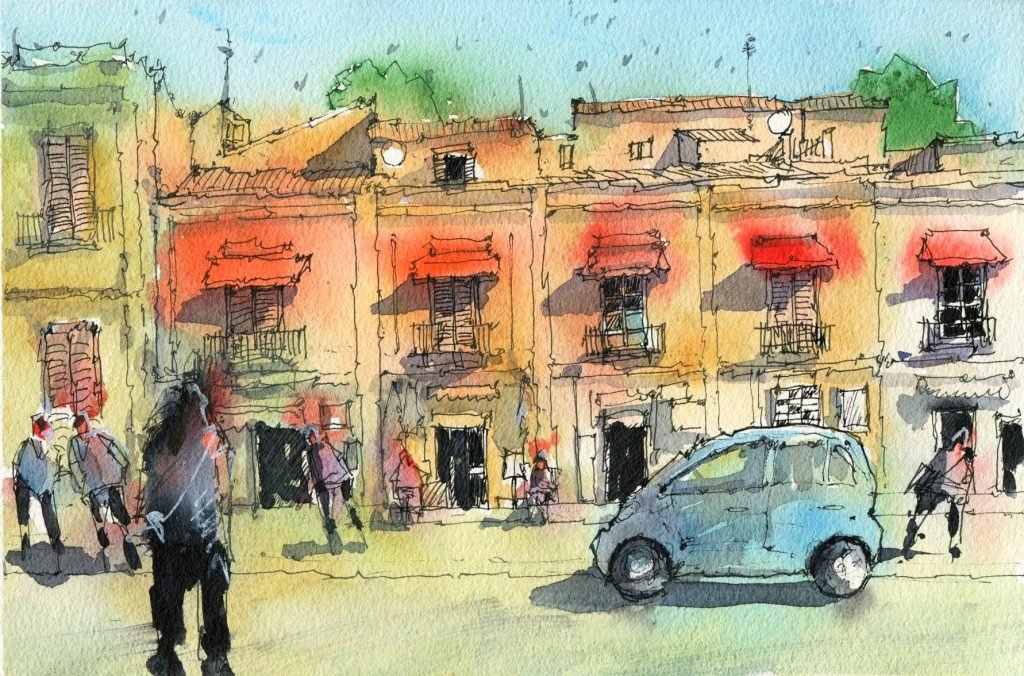
When adding watercolor, try to paint the lighter and warmer areas first such as the buildings, umbrellas, then add the darker shadows and cooler colors after. Otherwise, you may accidentally mix green!
I often sketch straight from the reference photo or scene in front of me with no pencil outline. What you can do is turn the pen on its side, and allow it to ‘graze’ the paper initially. This allows you to get in some faint marks in crucial areas – where buildings separate, height/width of buildings, where they touch the ground, etc. Then with these general guidelines in place, I draw in all the remaining details.
I hope these essential line and wash tips will help you in your artistic journey and give you a guide on how to approach any scene. Remember that the video resources will help you understand to a far greater degree. Have a look at the playlist below for more in-depth narrated tutorials:


